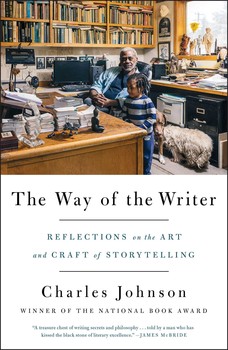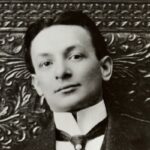
The Art of Revision: Most of What You Write Should Be Cut
Charles Johnson on How to Sculpt a Story
In fiction there must be a theoretical basis to the most minute details. Even a single glove must have its theory.
–Prosper Mérimée
It is in self-limitation that a master first shows himself.
–Goethe
A classic is a book that doesn’t have to be written again.
–Carl Van Doren
The late John Gardner, my writing mentor more than thirty years ago, once told a story about revision that has stuck with me. He said he gave a reading, and during the Q&A a woman raised her hand and said, “You know, I think I like your writing, but I don’t think I like you.” His reply was memorable. “That’s all right,” he said, “because I’m a better person when I’m writing. Standing here, talking to you now, I can’t revise my words. If I say something wrong or not quite right, or maybe offensive and it hurts someone, the words are out there, public, and I can’t take them back. I have to rely on you to revise or fix them for me. But when I’m writing, I can go over and over what I think and say until it’s right.”
I think Gardner captured the heart of the creative process. We often hear that 90 percent of good writing is rewriting. We also know that writing well is the same thing as thinking well, and that means we want our final literary product—story, novel, or essay—to exhibit our best thought, best feeling, and best technique.
When I compose a first draft I just let everything I feel and think spill out raw and chaotically on the page. I let it be a mess. I trust my instincts. I just let my ideas and feelings flow until I run out of words. It’s fine for an early draft to be a disaster area. I don’t censor myself. When I have this raw copy, I can then decide if this idea is worth putting more effort into. If so, then with the second draft, I clean up spelling and grammar. I add anything I forgot to include in the first draft and take out whatever isn’t working.
Then the real fun begins with the third draft. (Despite its importance, art should always be a form of play.) That’s where I work on what I know are my creative weaknesses. There are many, but let me focus on just one—poetic description, achieving what Gerard Manley Hopkins called inscape, and a granularity of specifics and detail. As a cartoonist and illustrator, I think visually first. Like most writers, my images overwhelmingly represent sight, what I see. We do have a built-in bias for visual imagery. We say we “see” (or hear) the truth. Never do we say we touch or feel it. So, in that third draft, I work consciously to include whenever possible imagery for the other senses—taste, smell, touch. If need be, I’ll resort to synaesthesia, or describing the experience of one of our senses using the language of another. Or onomatopoeia. With taste and smell, for example, my goal would be to describe odor as well as Upton Sinclair did in the “Stockyards” section of The Jungle; and sound as well as Lafcadio Hearn handles it. A book in my library that helped me much with this when I first started writing was The Art of Description by Marjorie H. Nicolson (New York: F. S. Crofts & Co., 1928).
Another problem I often have, personally, is at the idea stage. I sometimes start out with too many ideas. Before I begin to write, my thoughts are bursting with possibilities for the stories, multiple layers of meaning, things I’d love to include, all of which I jot down as quickly as they come to me. But then at some point I realize that less is more when one is plotting a story, if one wants it to be an economical, efficient, and coherent aesthetic object. Inevitably, I always have to scale things back, to search for and find the simple action and structure that creates suspense, causation that feels logical and inexorable, and a clean, uncluttered emotional through-line, i.e., what to emphasize and what to mute. With that decided, I then know how to place the discarded idea in a new way in the composition.
In that third draft, I begin to polish sentences and paragraphs for style. I always need a minimum of three drafts before I have anything worthy of showing to others, and that’s only if I’m lucky. (Don’t get me wrong: my drafts are not separate entities completed from start to finish. They flow into each other. I’m constantly rethinking a story’s beginning as I work on the middle and end.) Sometimes my ratio of throwaway to keep pages is 20:1. From the third draft forward, I work at varying sentence length (long, short) in every paragraph, and also varying sentence forms (simple, compound, complex, loose, periodic). I see each sentence as being a unit of energy. The music and meaning of each sentence and paragraph must carry into the next and contribute to a larger rhythmic design.
I try to make sure each paragraph can justify its being on the page. That is, each paragraph should have at least one good idea in it. Or do something to advance the story. Or enrich the details of the world in which the story is taking place or the characterizations of its people. I work at being as artistically generous as possible. I work to amplify a strong narrative voice. I want intellectual and imagistic density. And I want to achieve, of course, the feeling of organic story flow. I rewrite and edit until the piece has no waste or unnecessary sentences whatsoever. Nothing that slows down the pace of the story. Any sentence that can come out should come out. (“Kill your babies,” as the saying goes, unless, of course, you absolutely love that sentence.) There should be no remplissage (literary padding) or longueur (long and boring passages). No irrelevant postcard details in background descriptions. I want every detail to be “significant,” i.e., revealing in terms of character, place, or event. I work to get music—rhythm, meter—between sentences and paragraphs, as if the prose composition is actually a musical work, one pleasing to the ear. The way to test this is to read it out loud. If I stumble when reading the piece, I know those sentences that tripped me up (that were hard to say or recite) need to be rewritten. Also, I try to be generous with concrete language, and to write always with specificity. (The Devil is always in the details.)
I try, as I rework and revise, to remember a note I made to myself in my writer’s notebooks: “In great fiction the main element of importance is the fusion of character and event, their interplay, the way the latter reveals the former, and the way the former leads inevitably to the latter. One must also see how event transforms character even as it is produced by character.”
Character, then, is the engine of plot, and over the years I’ve come at the creation of characters from a few different angles: (1) basing them on an idea or principle; (2) drawing them from real people, specific individuals (or several) as my model for a character; (3) basing them on myself; and (4) basing them on the biography of a historical figure. Quite often, my characters combine all those approaches. So for me, revision is a combination of cutting away (like sculpting the sentence from stone) and also a constant layering of the language (like working with the sentence as you would clay). The palimpsestic layering part of the process often leads to sudden surprises—puns, oracles, and revelations—that I’m always looking for. And these discoveries often redirect the story away from my original idea or conception. Back and forth, adding and subtracting, like that. You know when a piece is finished, because you can’t pull out a single sentence or change a word or syllable. If you do extract that heavily polished sentence, you create a hole in the space between the sentences before and after it, since you have altered not only the sense but the sound that links those sentences. (It’s like ripping an arm off a human body, an act that affects everything else in the organism you’re creating.) Achieving this requires (for me) lots of thrown-away pages: 1,200 for Faith and the Good Thing, 2,400 for Oxherding Tale, 3,000 for Middle Passage, and more than 3,000 for Dreamer. I use this same method for short stories. I guess I don’t so much write stories as sculpt them. I love the sustained focus this requires, for it is so much like the first stage in formal meditation, called dharana (or concentration).
I started keeping a diary when I was twelve; my mother suggested the idea, mainly so she could read it and learn what feelings and secrets I was keeping from her. I remember her asking once at dinner, “Why don’t you like your uncle So-and-so?” and I thought, Dang! She must be a mind reader, then I realized she’d been reading the diary, and from that point on I had to hide it from her. In college the diary transformed into a journal in which I wrote poetry and brief essays to myself, and (as with a diary) tried to make sense of daily events. (These old journals fill up one filing cabinet in my study.) When I started writing fiction, the journals moved in the direction of being a writing tool and memory aide.
I use cheap, unlined spiral notebooks, each page like a blank canvas. Into them go notes on literally everything I experience or think worth remembering during the day; I jot down images, phrases used by my friends, fragments of thoughts, overheard dialogue, anything I flag in something I’ve read that strikes me for its sentence form or memorable qualities, its beauty or truth. These writing notebooks since 1972 sit on one of my bookshelves 30 inches deep, along with notebooks I kept from college classes. (I save everything; it’s shameless.) After 43 years of accumulation, the notebooks contain notes on just about every subject under the sun. When I have a decent third draft, I begin going carefully through my notebooks, page after page, hunting for thoughts, images I’ve had, or ideas about characters (observations I’ve made of people around me), carefully selecting from my notebooks details like someone arranging a Japanese rock garden. Although it can sometimes take five days (eight hours a day), and even two weeks, to go through all these notebooks and folders (since I add something new to the current one every day), I can always count on finding some sentence, phrase, or idea I had, say, 20 or 30 years ago that is perfect for a novel or story in progress. The literary journal Zyzzyva used to publish a feature called “The Writer’s Notebook.” If you look at the Fall 1992 issue (pages 124-43), you’ll see reproductions of my revised pages and an early outline for Middle Passage, as well as character notes for Captain Ebenezer Falcon that I wrote on hotel stationery (the Sheraton-Palace Hotel in San Francisco) when I was on the road.
When I tell students the anecdote about Gardner, I emphasize his feeling that the result of this painstaking revision process is that for at least once in their lives, here on the page, they can achieve perfection or something close to that, if they are willing to revise and reenvision their work long enough. And then I say: Where else in life do we get the chance—the privilege and blessing—to lovingly, selflessly go over something again and again until it finally embodies exactly what we think and feel, our best expression, our vision at its clearest, and our best techne?
Or, as Jeffery Allen said in an interview about his novel Song of the Shank, “I really tried hard to get it right. Art may be the only form of perfection available to humans, and creating a work of art might be the only thing in life that we have full control over. So we might ask, How is great measured? Craft is certainly one thing. I would also like to think that certain works of art transform the artist.”
Excerpted from The Way of the Writer: Reflections on the Art and Craft of Storytelling by Charles Johnson. Copyright © 2016 by Charles Johnson. Published by Scribner, a Division of Simon & Schuster, Inc. Reprinted with permission.
Charles Johnson
Dr. Charles Johnson is a novelist, essayist, literary scholar, philosopher, cartoonist, short story writer, a MacArthur fellow, winner of the 1990 National Book Award for his novel Middle Passage, and recipient of an American Academy of Arts and Letters Award for Literature.




















